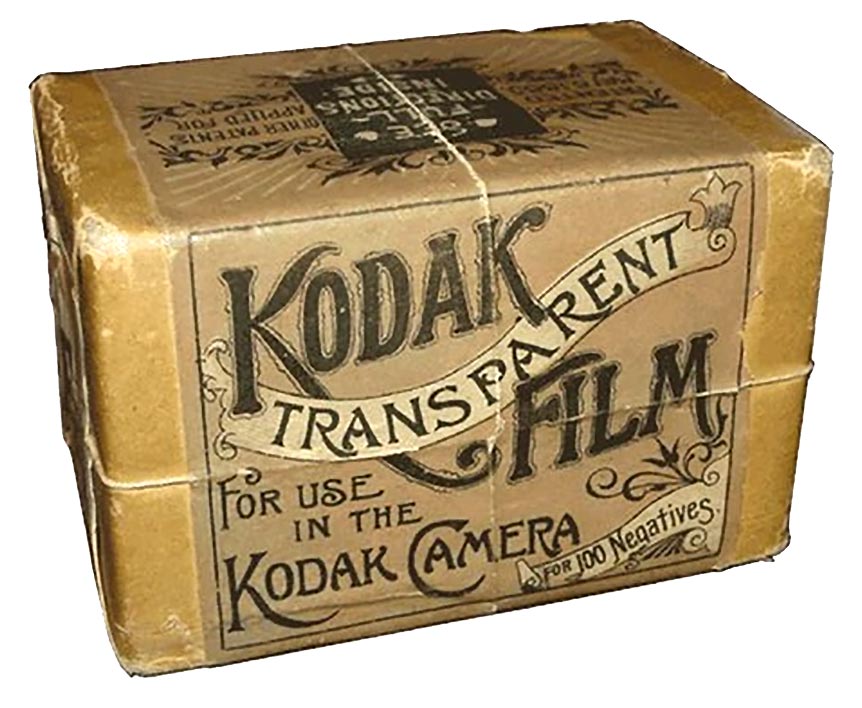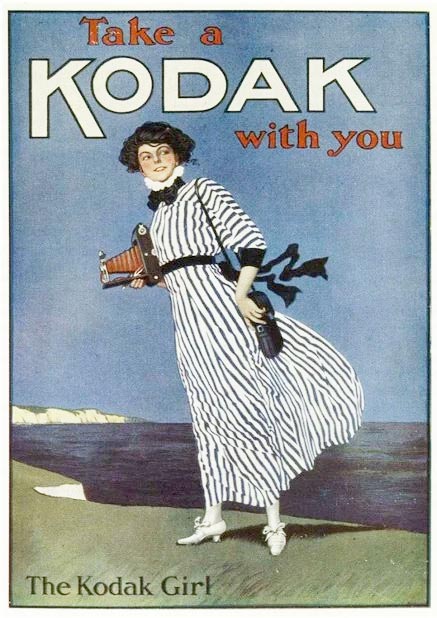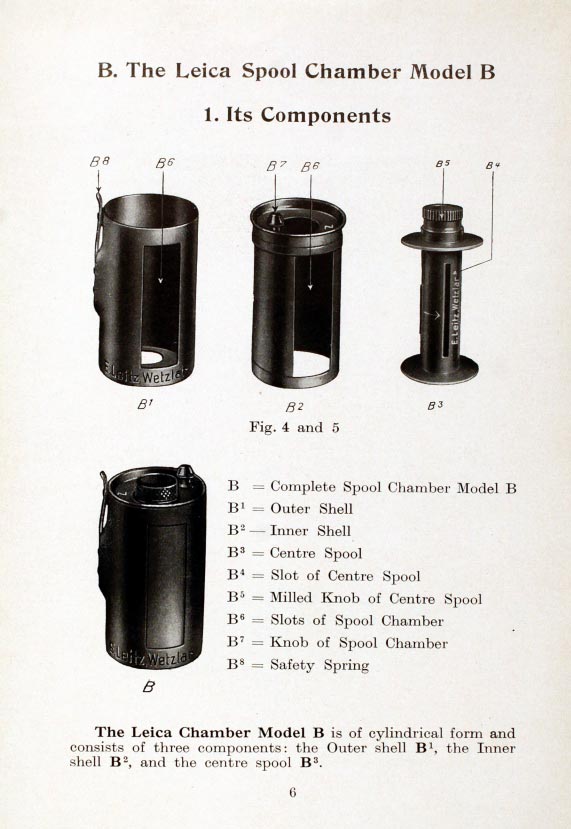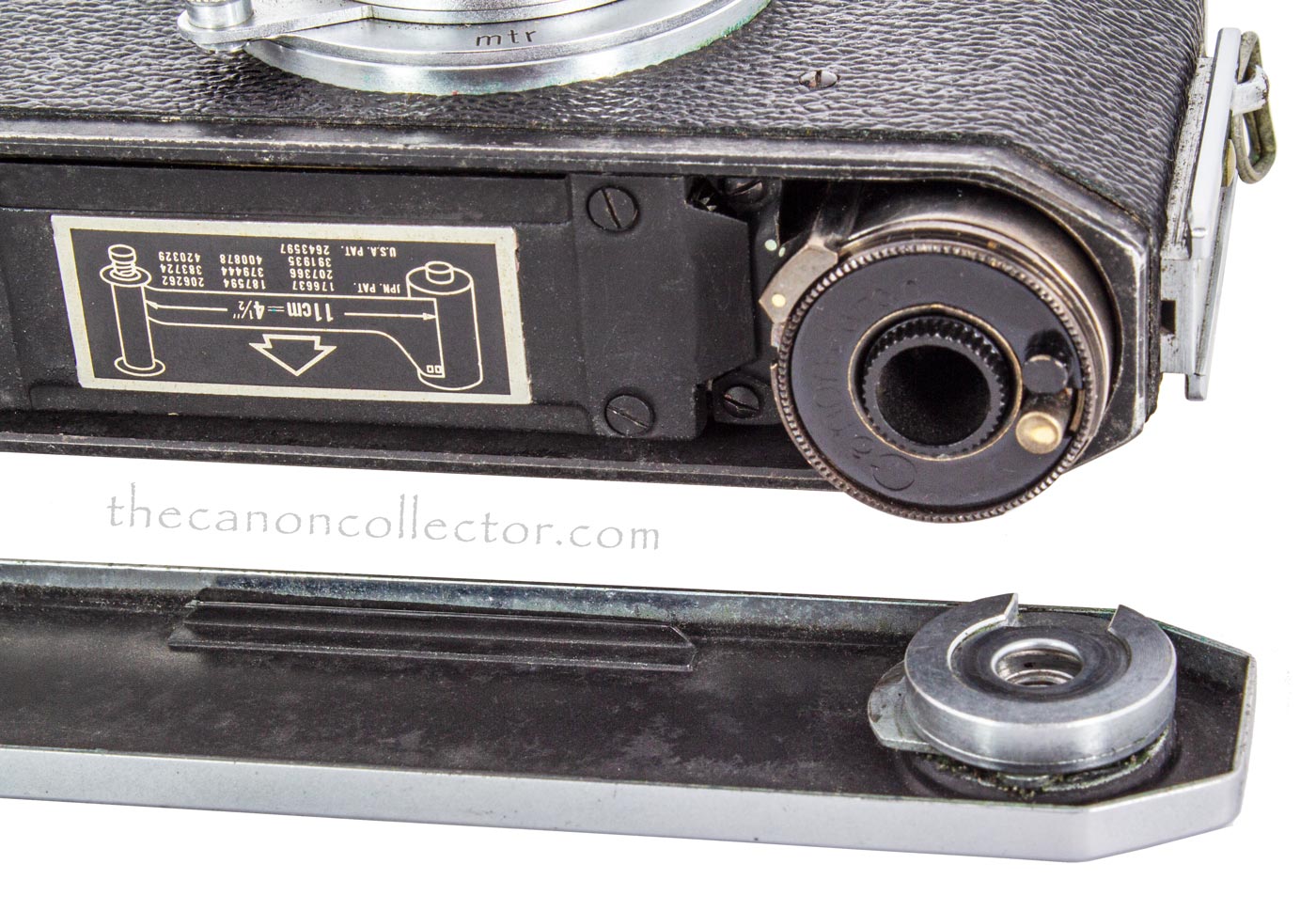35mm Film and Film Cassettes
We have been discussing cameras and
accessories but we seldom stop to
think that 35mm film and film
cassettes are also accessories.
With very few exceptions, 110 Film
which is 16mm wide and APS film
which was 24 mm wide, Canon made only 35mm cameras. And so we are talking about 35mm film as an accessory. But we, well, me for sure, seldom think
think this ubiquitous film used around the world. Where did it come from and how did it become so popular and why did Canon chose this format?
To understand the roots of 35mm film we have to go back to the beginnings of photography. George Eastman began his photo career when he bought his first camera in 1877. In those days taking pictures and especially developing them was a laborious process. About this time a “dry plate” process was developed in England which simplified things greatly. Aware of this development, Eastman worked on developing his own method of making these plates and he received a patent on the process in April of 1880.
This image, purloined from the internet, is of a box of Eastman’s early 2 3/4 inch film for the “Kodak” Camera.
An example of an early ad for the Eastman “Kodak” camera with their motto, “You Press the Button, We do the Rest”.
In1881 he and a financial partner formed the “Eastman Dry Plate Company” and they began producing dry plates. Wanting to be able to create a way to make multiple exposures quickly and easily he began experimenting with paper negatives so that multiple exposures could be made on material that was rolled up in the camera. By 1885 he had perfected his rolls of paper film and began to market them. Shortly after that the company name was changed to the “Eastman Dry Plate and Film Company”.
A celluloid film base was created in England in 1887 that was flexible and could be coated with film emulsion. Eastman quickly seized on this new material and acquired the rights to use it. By 1889 he was producing transparent celluloid film for photographers. It was also in that year that he brought out his own first camera, the Kodak. This camera created a circular image two and a half inches across on film that was two and three quarter inches (70mm) wide.
You bought the “Kodak” already loaded with enough film for 100 images. When you finished the roll you sent the camera with film to Eastman, the film was
developed, and your prints and camera with a fresh roll of film were returned to you. And this gave rise to the Eastman motto, “You push the button, we do the rest”.
A few years later, in 1899, Kodak marketed 2 ¾” film rolls as 116 and 616 film. These rolls were first used in the Kodak 1A Folding Pocket Camera. Film in this size was only discontinued in 1984.
Now enters another great American inventor, and another one not so well known. In May of 1889 Thomas Edison ordered one of Eastman’s cameras. He was interested in photography and particularly in making moving pictures. At the time he was working on creating a moving picture machine, to be called the Kinetoscope, which would allow a viewer to look into an eyepiece and see a “movie”. To do this it was necessary to create a camera, to be called a Kinetograph, that could take a series of images sequentially.
Working with Edison in his labs was an engineer by the name of William Kennedy Laurie Dickson whom Edison placed in charge of the moving picture project.
It was natural to turn to Eastman for film which Dickson did. The 2 ¾” film was too wide for what they had in mind but they had a rough idea of the image size they needed for a quality result. As Eastman did not make a film narrow enough Dickson bought the wider 2 3/4″ film which came in rolls without perforations. He devised a means of splitting the film lengthwise and of punching the necessary sprocket holes for a positive reliable feed at a constant rate.
The split rolls were 1 3/8” (35mm) wide however this term was not used till much later. An image size of 1” by ¾” was decided on which fit across the film leaving room on both sides for sprocket holes. In the interests of brevity I am leaving out a great deal of detail but you can find much more on the internet.
Dickson decided on 4 holes per frame and a frame rate of 16 per minute, which remained pretty much standard until much later when it was raised to 24 per minute to accommodate the needs of the sound tack on talking pictures. It appears that Edison laboratories cut their own film to size and perforated it from about 1890 to 1894.
The Kinetoscope was a success and its popularity continued until the means of projecting the images was demonstrated in 1895 and steadily improved upon thereafter. All of these developments were considered marvels of the time and very popular.
The Blair Camera Company of New York was the first company to offer rolls of film in this format but before long Eastman was offering 1 3/8” film perforated on both edges sixty four times per foot to engage the Kinetoscopes sprockets. At four sprocket holes per frame and 16 frames per second each foot of film could hold 1 seconds worth of action. A movie’s running time in seconds during the silent era was equal to the length of the film in feet.
It became a world standard through Edison and Eastman and other major patent holders forming a cartel called the “Motion Picture Patents Company” and they agreed in 1909 to make 35mm film the world standard. This has remained standard ever since.
Interesting to note that originally the perforations in the film were round but they did not wear well in motion picture devices with the constant jerking movements. Then they tried the “Bell and Howell Perforation” (BH) which had straight top and bottoms to the holes but bowed out sides. This did not wear well either, the corners being too sharp. Finally the industry settled on the “Kodak Standard” (KS) which was a hole with rounded corners and straight top, bottom and sides.
As the “movies” became more popular and widespread more and more movies were shot and this gave rise to
easily available film ends in various lengths. This resulted in cameras being made in this format to use this easily available film format. Initially the earliest still cameras adopted the movie image format of 18mm x 24mm positioned across the film. One of the first cameras in this class was the Simplex manufactured by “Multispeed Shutter Company” of New York in 1914. This company was already producing motion picture cameras so it was a natural step for them. Other cameras followed and the format slowly gained in popularity.
So when Oskar Barnack began designing a miniature camera to use 35mm film, around 1914, there were already cameras using this medium. He was an engineer in the Leitz motion picture camera division so the choice of 35mm was a natural. But he set out to create a camera that would produce quality images and for that he needed as large a negative as he could get on 35mm film so he turned the image sideways on the film and made it over twice as large as the standard motion picture frame. Barnack’s Leica camera was finally released in 1925 and as the cameras improved over the next several years the popularity of 35mm film grew apace.
When the company that became Canon began making cameras in the mid 1930’s their inspiration was the Barnack Leica which led them to 35mm film. With the exception of APS and 110 film with which they experimented they have only used that one format.
This page from a Lietz Catalogue from the 1960’s says that the earliest Leica cassette was available from 1925 when the first Leica camera was introduced.
This page from a 1934 Leitz Instruction book shows the construction of the Leitz cassette. You can read the whole Manual by clicking the page. In particular, pages 6 thru 14 explain the operation, loading and use of the cassettes.
And this brings us to film cassettes. When the first 35mm cameras were created film came in rolls and one used a darkroom to load the camera. Inconvenient and it kept the film format from becoming widely popular. The solution was to create a cartridge that would hold the film, was light tight, and would allow reloading the camera in daylight. The problem was solved by the very early introduction of the film cassette.
Film cassettes in themselves would be an excellent subject for a collection. I have found very little information on the early adoption of cassettes but from its earliest days I know that Leitz offered them. I have found a summary of cassettes in a Leitz catalogue from the 1960’s which indicates the cassettes came out around the same time as the Leica camera introduction in 1925.
Over the years many manufacturers like Leitz, Canon, Nikon, Contax, and others have made reusable cassettes and others made a variety of disposable cassettes. The reusable variety have three pieces, the spool on which the film is wound, an inner container into which the spool is placed and an outer container into which the inner container is placed. The two containers can rotate with respect to each other which opens or closes an opening in the container so that the film can be drawn out. This opening of the cassette is accomplished by the turning of the locking key on the bottom of the camera.
This clipping from an English 1934 Kodak Catalogue lists 35mm film available in cassettes or unspooled to be loaded into Leica or Contax cassettes, in a darkroom obviously.
I have found a page from a Leitz catalogue from the 1960’s that lists the cassettes for various models of Leica cameras and it lists the cassette FILCA which was for the Leica Model A and dates given for it are 1925-1954. It appears that Leitz has offered such a cassette since the introduction of the Leica camera. In a Leitz Directions Manual from 1935 very complete instructions for the loading and use of the Leitz cassette can be found.
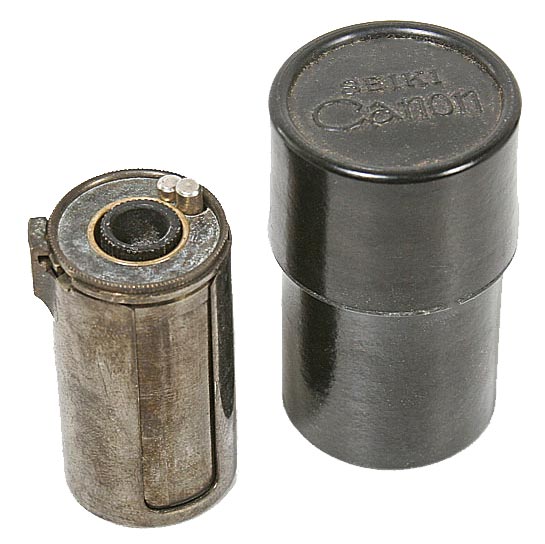
It appears that Canon had a film cassette very early but I don’t know when the first one was. Pacific Rim Camera had this cassette for sale from when Canon was Seiki Kogaku, very early in the Company’s history.
I have not found information on Canon’s earliest cassettes but I did come across a Seiki Kogaku marked cassette that was listed for sale on Pacific Rim Cameras some time ago. So they appeared early in Canon’s history.
In the Manual for the SII there are instructions for the first model of the Canon Cassette which fit in all of the Barnack Canon models. It was constructed and operated the same way as the Leitz cassette.
This is a page from the Model SII Manual showing the structure of the Canon Cassette, which they are refering to as a Magazine.
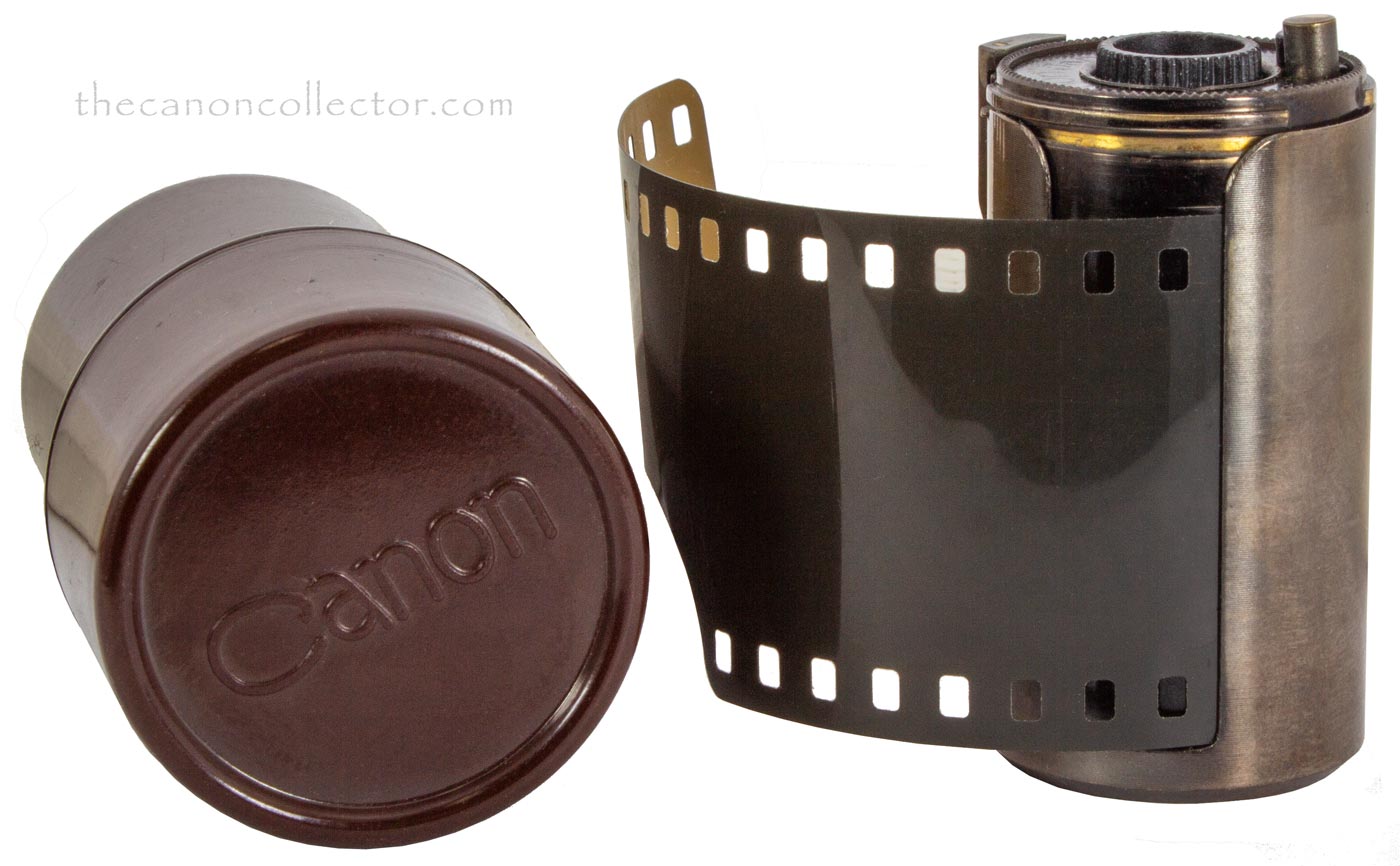
When the loaded cassette is closed it has room for the film leader to extend out of the cassette between the inner and outer shell. It is light tight because light will not travel around corners.
The Canon Cassette fits all models of the Barnack cameras. As the bottom is locked the lock engages the lugs on the cassette and opens it allowing the film to be drawn out without touching anything.

The cassette opens by turning the inner shell inside the outer shell. When open the film can be drawn out, or rewound. The cassette is built of brass and reusable an unlimited number of times. Reloading was traditionally done in a darkroom. There are problems trying to use it in a daylight bulk loader which are discussed below.
Leica introduced the Model M3 in 1954 which caught many in the camera world off guard. Canon immediately began development of a camera to compete with it calling the new cameras the V Series. The first to come to market was the Model VT. It was not up to par with the M3 but it was a start. Over the next several years new models came out regularly in the search for an equivalent camera.
However, the Canon Film Cassette did not fit in the new bodies. It was not a matter of function but one of shape. The new cameras retained the bottom key lock even though it was not necessary. But it was required to open and close the film cassette.
The new film cassette was called the Cassette V in keeping

In 1956 Canon brought out the Model VT which
was their answer to the Leica M3. The Barnack
style cassettes did not fit the new swing back
models and a slightly modified cassette was required: the Canon Cassette V. In operation the cassette worked the same way. The shape was changed to fit in the new body style.
Pages 32 and 33 of the Canon Model 7 Manual sets out the procedure for loading the Canon Cassette V but it is the same for all Canon cassettes. Of course the procedure described must be carried out in a darkroom. The cassettes are light proof but all cassettes should be kept in subdued light and in their plastic cases. Nothing works perfectly!

This is the Canon Cassette V in my Model L2. It is closed but when the back is closed and the key lock on the bottom plate turned it will open.
with the name of the new camera models. It functioned exactly the same as the old cassette but the exterior profile was changed to fit the new camera bodies.
The bottom key was continued through the Canonflex series allowing use of Canon Cassette V. However, although the Model FX and FT had a bottom key , it did not engage with the cassette to open and close it. After that the bottom key died out and with it, so too the Canon Cassette. Without a means of opening and closing the cassette in the camera it did not function as designed. However, by this time, the use of the Kodak designed 135 cassette there was no longer any need for the reusable Leica, Canon, Contax, Nikon and other cassettes that were born in an age where darkroom loading of film into cassettes was considered a great advance in photography.
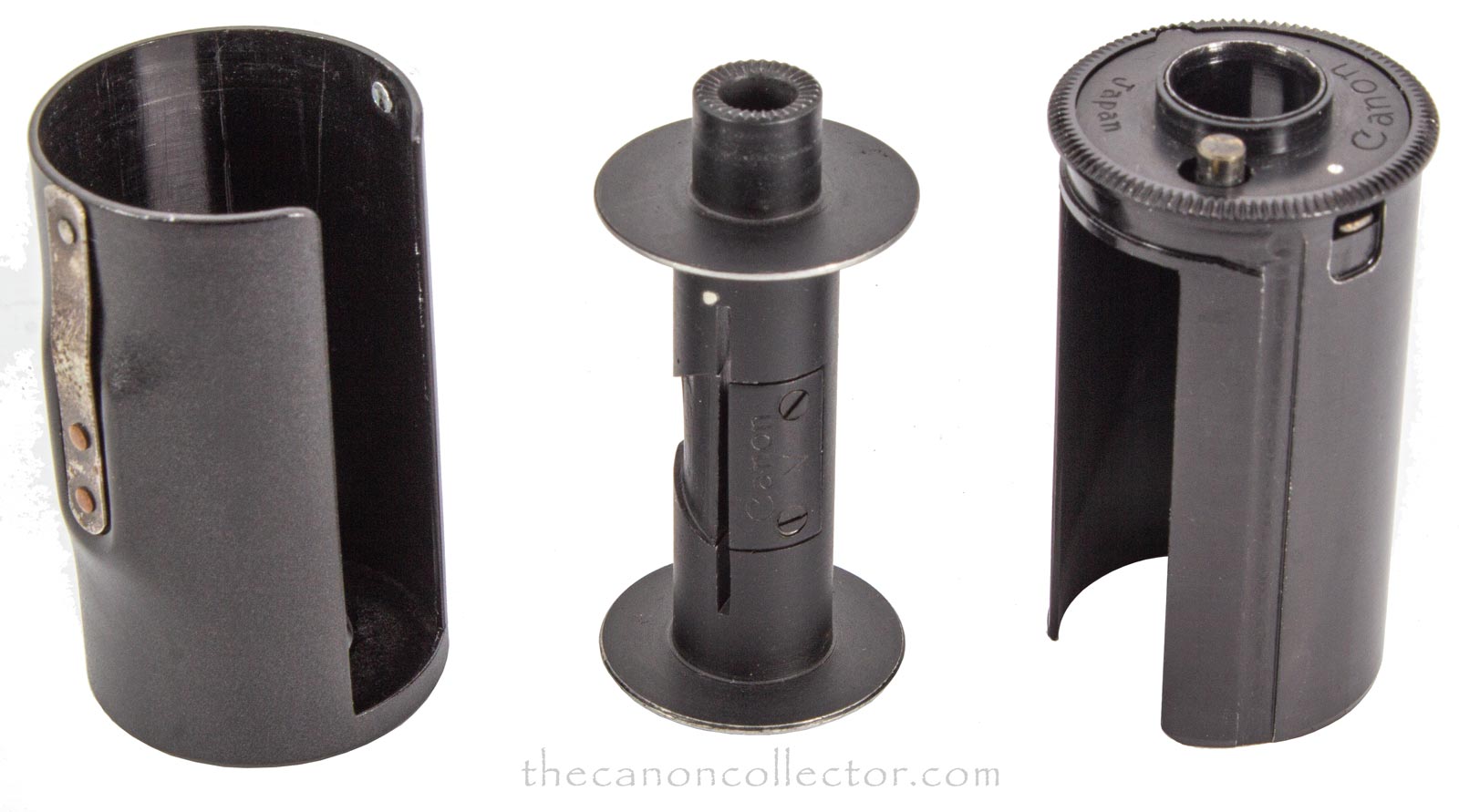
The three parts of the Canon Cassette V.
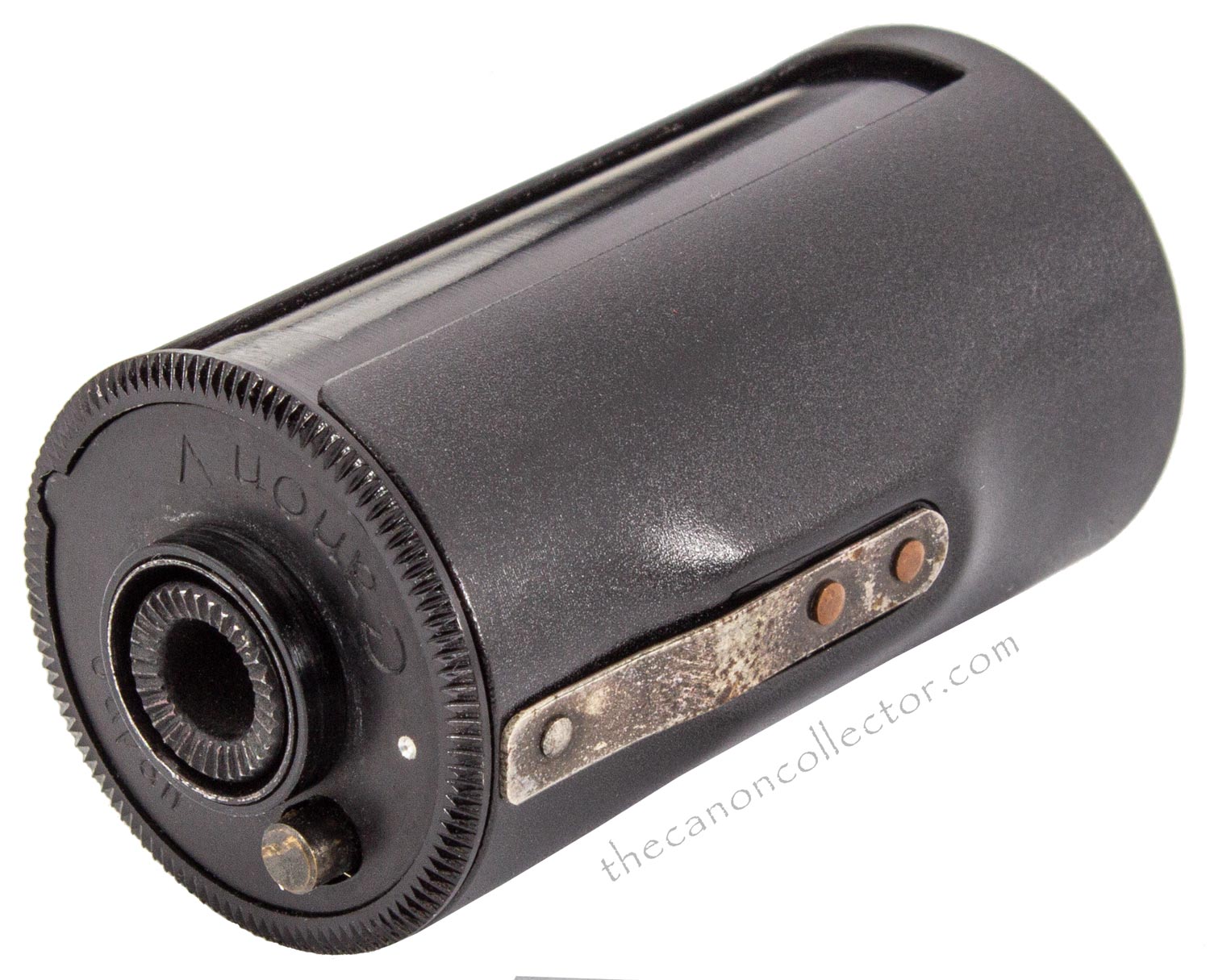
Canon Cassette V in the closed position.
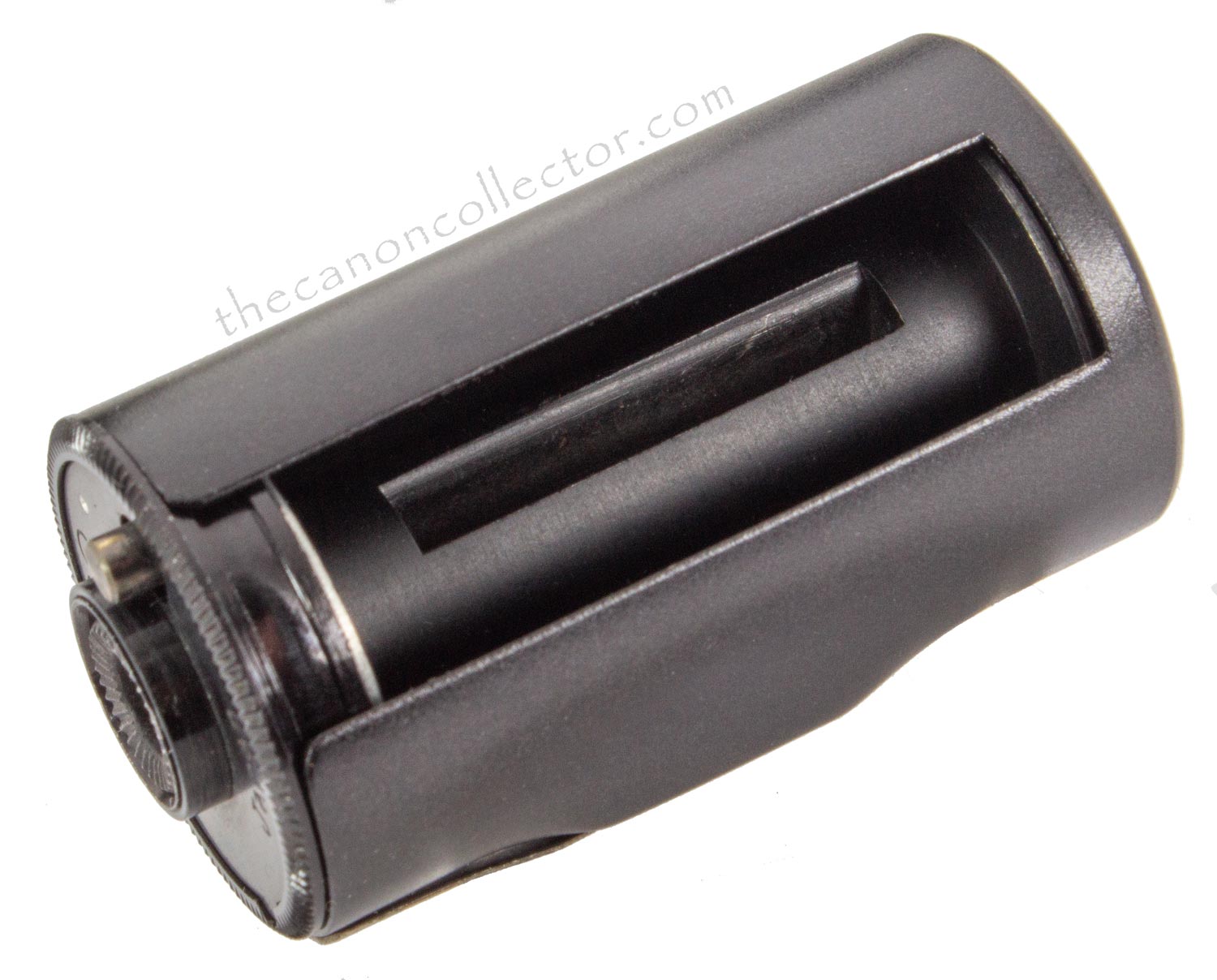
Canon Cassette V in the open position.
Using Your Canon 35mm Film Cassettes
Before I acquired my Canon Cassettes I wanted to actually use them. However, now that I have had the chance to examine them I realize that may not be the easiest option. You see, the cameras have a means of opening and closing the cassettes while they are enclosed in the camera. But they are intended to be loaded in a darkroom. There you can open and close them by hand.
However, unless you want to use a darkroom you have a problem. You see, my bulk loader does not like them. Because they don’t have a lip along the edge where the film enters and exits the loader has no way to secure the cassettes in a proper loading position. If you manage to overcome this issue then you have the problem of stray light. You load the film with the cassette open but how do you close it? There is no method to do it with the loader closed. So you need a darkroom. Checkmate!
There is room between the inner and outer shells for the film to pass. I suppose you could attempt to load the film with the cassette closed but the potential for scratching the film is considerable. Not a good option.
So, I think that if you want to use them you are stuck with a darkroom. Or you could simply use a commercial traditional film can or plastic facsimile with velvet lined lip. So easy. The funny thing is, I want to use my brass ones. So I guess I am going to spend some time in the dark! My wife already thinks I spend too much time in the dark, but, that’s another story.
This website is the work of R. Flynn Marr who is solely responsible for its contents which are subject to his claim of copyright. User Manuals, Brochures and Advertising Materials of Canon and other manufacturers available on this site are subject to the copyright claims and are the property of Canon and other manufacturers and they are offered here for personal use only.


